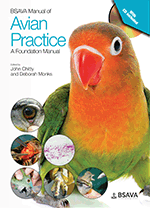
Full text loading...

In birds, clinical examination and history taking are rarely sufficient to result in a complete diagnosis. Many diseases present with similar clinical signs, so it is therefore necessary in most investigations to take clinical samples for laboratory analysis. There are many options available to clinicians and this chapter describes some of the more commonly performed tests. Quick reference guides: Blood sampling – jugular vein; Blood sampling – brachial vein; Blood sampling – caudal tibial vein; Crop wash.
Sample taking and basic clinical pathology, Page 1 of 1
< Previous page | Next page > /docserver/preview/fulltext/10.22233/9781910443323/9781910443323.12-1.gif

Full text loading...






































